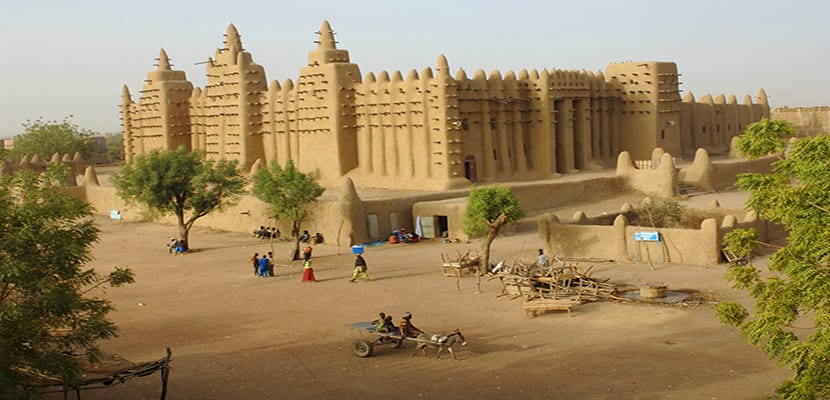
Image | sightseeingofmoschee
TAfter several years of internal conflict and instability, tourism is returning to Mali again to position itself as one of the most attractive destinations in West Africa. Although for many tourists, Sub-Saharan Africa is reduced to a trip to Tanzania and Kenya, there are actually several reasons that make Mali one of the most interesting places to visit on the continent. That is why, below, we give you 5 reasons why you should travel to Mali for an adventure.
Bamako
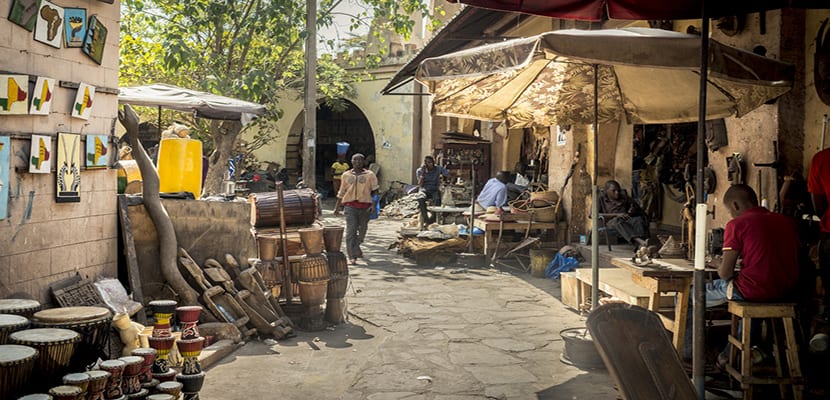
Image | Flickr by Göran Höglund
The capital of Mali is the country's natural gateway, a melting pot of cultures that make up one of the most multi-ethnic societies in Africa. Fulanis, Senufos, Dogons, Tuaregs or Bambaras are some of the ethnic groups that coexist in Mali, each one with its particularities in clothing, way of life or religious beliefs.
Bamako markets are a good place to get to know them and get acquainted with Malian society. It is also a good starting point to visit the city and buy some souvenirs related to Malian handicrafts and their culture. It is in the Bamako Handicraft Market where you can find some of the most interesting masks to take away as souvenirs.
A quick visit to the National Museum of Mali will allow us to soak up its history through the years: from prehistory to modernity. Here we are presented with several permanent and temporary exhibitions on textiles, carvings and masks typical of the different ethnic groups of the country.
Near the National Museum is the Mali National Park consisting of 17 hectares and filled with thousands of trees, including some exotic ones. It was created for the leisure of the inhabitants of Bamako and their visitors and houses an area dedicated to children so they can play, a bike path and a gym.
Despite the fact that access is not free, it receives approximately 500 visits a day, which is indicative of its success. Many families flock there to spend the day and to have a picnic on the grass or to play sports.
Next to the Bamako National Park is the Zoo, which has been reopened a few years ago after restoration and refurbishment works.
Djenne
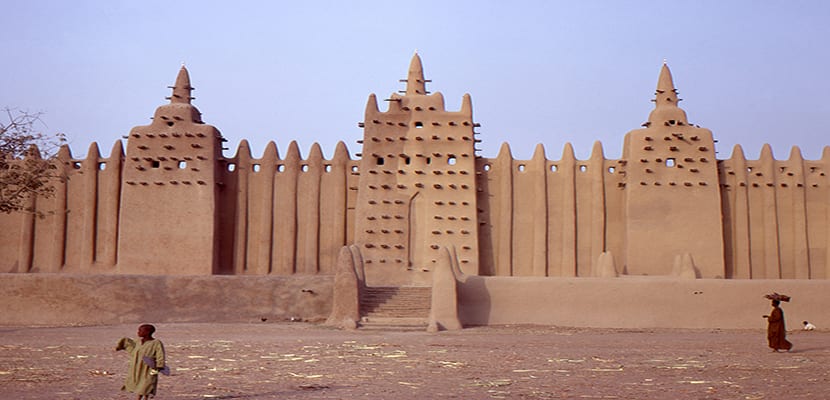
Bordering the humid area of Sudan and the Sahara is Djenné, 500 kilometers from Timbuktu by river, with which it is commercially linked.
The city is built following a very homogeneous Sudanese architectural style. The houses are plastered adobe cubes and are decorated with pierced pilasters, battlements or parapets. Eleven neighborhoods of Djenné are spread over an area of twenty hectares limited by a wall.
The wide and narrow sandy streets lead to two essential squares in one of which (the Market Square) is the Great Mosque, which stands tall in the landscape. It is the largest adobe temple in the world and the most beautiful Sudanese-style temple in West Africa. Perhaps that is why it is part of the UNESCO World Heritage List.
Such a building needs to be rehabilitated frequently, which is why almost all the inhabitants of Djenné must collaborate every year to restore the layers of adobe lost during the rainy season.
The best day to visit Djenné and walk its streets is Monday as a large market is held, right in front of the mosque, which attracts Malians from all over the country dressed in their typical clothes. Something worth seeing.
Mopti
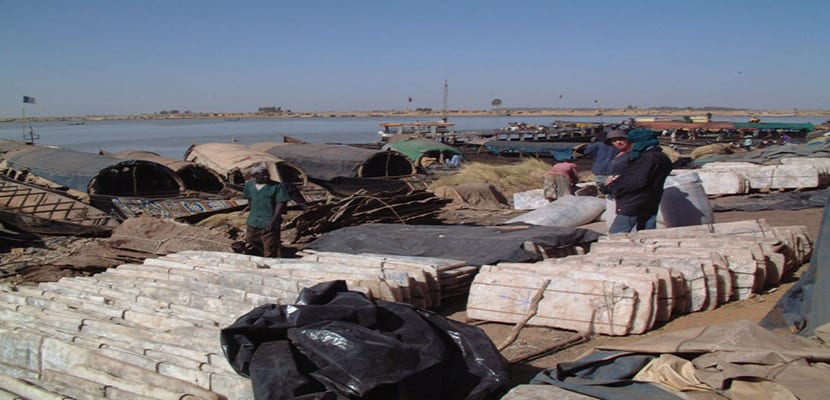
Two hours from Djenné we find Mopti, another of the essential towns on a visit to Mali. Located on the banks of the Niger River and nicknamed the Venice of Africa, it is a good place to continue discovering the best of the Sudanese architecture of this country with its beautiful Great Mosque.
Taking advantage of the fact that the population is on the banks of the Niger, the traveler can enjoy a quiet river walk aboard one of the cayucos that are there. Hence it is nicknamed the Venice of Africa.
However, it is said that the most interesting thing about Mopti is the mix of culture that comes together in its market. Although in the early hours of the day there are not many people, little by little the pinazas (wooden barges) loaded with products to sell are arriving.
The Dogon Country
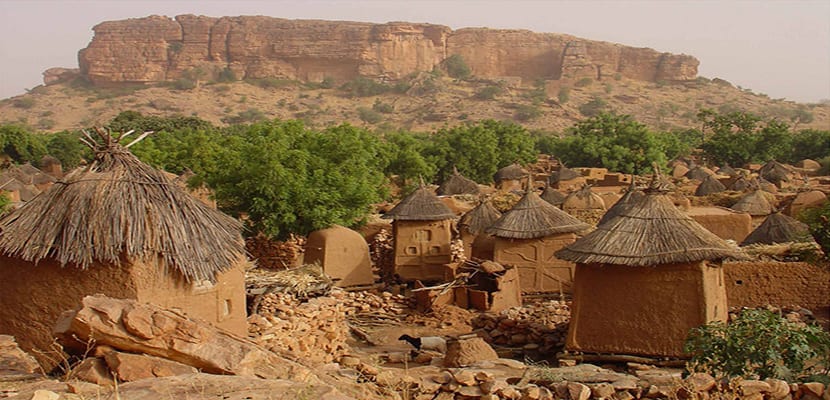
Image | Tails of wonder
About an hour and a half separate Mopti from the Dogon Country, where one of the most interesting ethnic groups in Mali lives. The Dogon came to this place at the end of the fourteenth century when the Mali empire fell when fleeing the expansion of Islam, since they were animalistic.
Here they found a place to settle and preserve their culture in adobe houses within small communities.
The Dogon Country is famous for the three-day trek that can be practiced here at the foot of the Bandiágara fault. During the tour you can contemplate the way of life of the Dogon and the beautiful baobab, the most beautiful of African trees.
Timbuktu
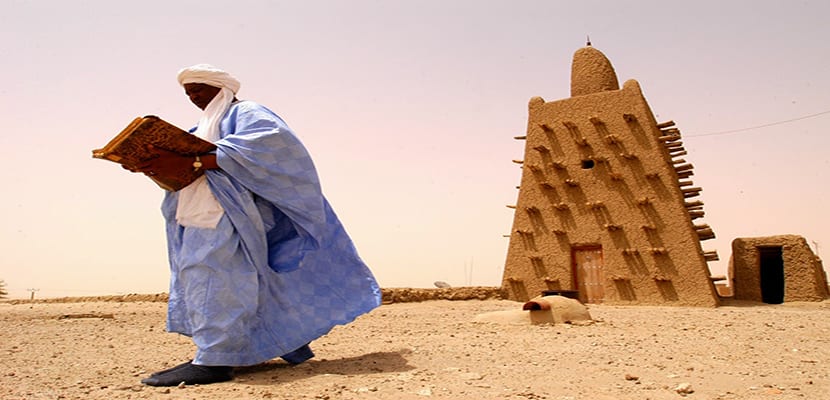
Image | Afribuku
Halfway between the African savannah and the Sahara desert, in an area called the Sahel, is Timbuktu, which has been the capital of the Tuareg people for years.
Five years ago, Timbuktu had the misfortune to fall into the hands of jihadists who devastated the city and forced its inhabitants to flee. Gradually the waters returned to their course and peace returned to the north of Mali to the luck of the locals and tourists, who can now once again be amazed by the beautiful adobe and mud city of Timbuktu, one of the most beautiful in the world.
Some of the most iconic places to visit here are the Djingareyber Mosque or the Sidi Yahya Mosque.